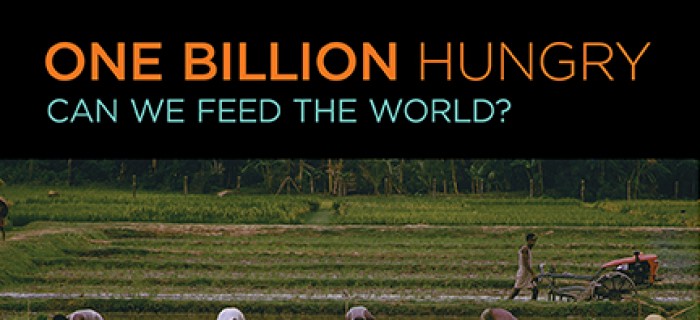One Billion Hungry: Can we feed the world? By Gordon Conway (Book Review)
In Agroecology and Sustainable Food Systems, 37:8, 968-971
One Billion Hungry: Can We Feed the World? by Gordon Conway. Cornell University Press, Ithaca, New York. 2012. 439 pp., paperback, $24.95, ISBN 978-0-8014-7802-4Sir Gordon Conway’s One Billion Hungry: Can We Feed the World? is the authoritative text for the 21st century iteration of what Raj Patel (2013) calls the “long Green Revolution.” In it, Conway outlines an approach for ending hunger and poverty by reaching out to the world’s hungriest people—peasant farmers.
One Billion Hungry is an expanded update of Conway’s earlier work, The Doubly Green Revolution (Conway 1997). During the 15-year hiatus between books, an explosive combination of global warming, peak oil, water scarcity, agrofuels, grain-fed meat, land grabbing, and financial speculation has ushered in a new era of high, volatile food prices and widespread peasant dispossession and impoverishment. Notwithstanding record global harvests following an average annual rise in food per capita of 12% over the last 40 years, in 2008 and 2011, over one billion people went hungry, triggering food riots and full-scale rebellions. The resulting human suffering and political instability have called the legitimacy of the global food system—and the Green Revolution—seriously into question.
One Billion Hungry attempts to reestablish the imperative of the Green Revolution under conditions of global markets, monopoly concentration, and the privatization of pretty much everything—including the hallmark public research of the original Green Revolution. Conway laments these developments, but, ultimately, accepts the liberalization of food systems and avoids questioning heroic assumptions of endless global economic growth. This steers One Billion Hungry to the standard Green Revolution proposal: To feed nine billion people, we must double food production by 2050.
For Conway, the routes to world food security are: technological innovation, fair and efficient markets, people, and political leadership. He’s right, but just how these routes are traveled is where followers and critics will part ways.
To access the full article, please visit Taylor Francis Online. Article is available after free registration.


 Help Food First to continue growing an informed, transformative, and flourishing food movement.
Help Food First to continue growing an informed, transformative, and flourishing food movement.




